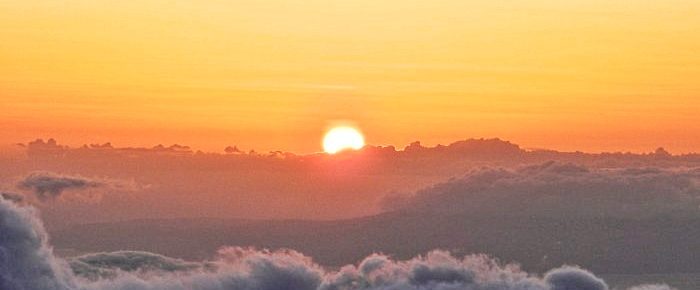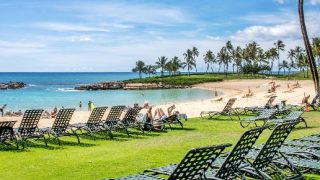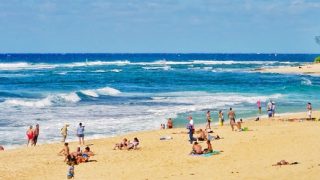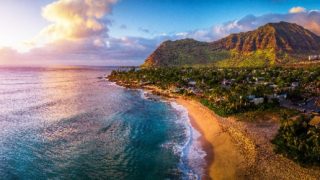For decades, Hawaii has distinguished itself from the rest of the United States by opting out of the biannual Daylight Saving Time (DST) ritual and running on “island time.” While much of the country sets its clocks forward or back each year, Hawaii remains on standard time all year, offering a steady rhythm of sunrises and sunsets.
As the mainland remains stuck on whether to make DST permanent, Hawaii’s decision to keep things simple has sparked a new conversation. Could the rest of the U.S. benefit from following the islands’ lead and embracing a more relaxed, unchanging approach to time?
But time in Hawaii carries an additional layer of meaning. “Island time” isn’t just about the clocks; it reflects a laid-back approach where things rarely start on time and schedules are more flexible. For locals, traveling to the mainland requires adjusting to the punctuality expected across the U.S., where everything tends to run on the clock. It’s another way Hawaii’s relationship with time sets it apart from the rest of the country.
The twice-yearly hassle for Hawaii.
While Hawaii remains on a steady schedule year-round, the rest of the U.S. changing its clocks twice yearly creates a recurring challenge. During Daylight Saving Time, Hawaii is three hours behind the West Coast, but the difference shrinks to just two hours when the mainland reverts to standard time. This shift means adjusting everything from business meetings to travel plans, adding a layer of complexity to living on “island time” while the rest of the country switches back and forth.
Why Hawaii stays off the clock.
Hawaii has not observed Daylight Saving Time since 1945, long before the Uniform Time Act of 1966, which standardized DST across the U.S. The islands’ geographical location near the equator means there is little variation in daylight hours throughout the year. While northern states experience dramatic changes in sunrise and sunset times between seasons, which can impact the desirability of year-round time, Hawaii’s daylight only shifts by about an hour, making the need for DST minimal at best.
As one BOH reader, MJ, pointed out, “The amount of daylight is always the same with or without daylight savings. This is science.” For Hawaii, staying on standard time has become part of its unique rhythm. The islands enjoy consistent sunrise and sunset times without the hassle of changing clocks twice a year.
Readers’ feelings on daylight saving time.
The discussion about whether to end Daylight Saving Time (DST) has generated strong opinions, and our readers have been vocal. Here are a few perspectives shared by those who’ve commented on the topic:
MJ pointed out that “DST is an attempt to adjust” for the wobble in the earth’s axis and urged others to “check the facts, folks.” He highlighted that everyone might not fully understand the scientific reasoning behind DST.
Meanwhile, Sonia expressed frustration, saying, “It’s time to ditch this stupid practice. It is long past its ‘sell by date.'” She argued that most people prefer standard time to be permanent, echoing the sentiment of many.
Others like Sherri and Marsha were in favor of keeping DST. Sherri commented, “Let’s keep it at this time,” while Marsha added, “It’s so nice to have more light in the evening.”
However, some readers, like Evan, raised significant safety concerns: “Kids shouldn’t have to go to school in the dark… Not a safe situation at all.” This highlights the potential issues with permanent DST, particularly in winter.
The debate continues, but what’s clear is that whether supporting full-time DST, standard time, or opposing any changes, this topic remains a hot-button issue for many across the country.
The ongoing push to end DST in the U.S.
While Hawaii’s permanent time zone may seem more straightforward, the rest of the U.S. continues grappling with DST’s pros and cons. The Sunshine Protection Act, passed by the U.S. Senate in 2022, aims to make DST permanent across the country. However, the legislation has been stalled, leaving Americans in limbo regarding whether clock changes will continue.
Many people are frustrated by the twice-yearly disruption. Paul W., a commenter, stated, “We should set the clocks fixed to standard time. Noon is when the sun is at its zenith, and midnight is when the sun is at its nadir. The clock should simply state the astronomical truth.”
For those who favor standard time, the argument is that it aligns better with the sun’s natural movement. But this perspective is not universally accepted. Many still prefer the extra daylight in the evening, while others, like parents in northern states, worry about safety concerns during dark mornings in winter.
The case for permanent daylight saving time.
Proponents of permanent DST argue that the extra daylight in the evening offers significant benefits. Extended daylight hours mean more time for outdoor activities, increased safety, and a boost for businesses. Melissa B., another commenter, explained, “I much prefer having the extra hour of daylight. I feel a lot safer walking out to my car when it’s still daylight.”
In states like Florida and California, where sunny weather often means more time spent outdoors, many say they would appreciate the extra hour of evening light that DST provides. Sherri, a commenter, expressed her preference for keeping DST, saying, “It’s so nice to have more light in the evening. To be outside and have time to go walking.”
However, the trade-off for extended daylight in the evening is darker mornings. In parts of the country, this could mean children going to school in the dark—a significant concern echoed by many who oppose DST.
How Hawaii’s approach could influence the U.S.
As the debate over DST continues, Hawaii remains an example of what life without clock changes looks like. The islands operate on standard time all year long, and many residents appreciate the simplicity, if nothing else. Living “off the clock” is not just a practical solution; it’s a way of life for many in Hawaii, reflecting the laid-back culture of the islands.
MJ offered an interesting perspective on the debate, noting that while Hawaii’s approach works for the islands, the northern states face different challenges: “DST is a good idea for the North. Period.” The situation is more complicated in places like New York or Minnesota, where daylight hours fluctuate dramatically. Permanent standard time might not be as effective in states with extreme variations in daylight throughout the year.
What happens next?
As of now, the future of DST in the U.S. remains uncertain. While Hawaii thrives on its permanent standard time, the rest of the country is stuck. Will the U.S. join Hawaii in ditching DST, will the nation move toward permanent daylight saving time, or will this remain an issue in limbo? One thing is certain: Hawaii’s model offers a glimpse of a more straightforward approach to timekeeping that works well for the islands and our unique needs.
As the discussion continues, many will look to Hawaii’s off-the-clock lifestyle as an example of a life free from the hassle of clock changes—one that might inspire the rest of the U.S. to reconsider its relationship with time.
We welcome your input!
Get Breaking Hawaii Travel News







I live in Arizona which observes Mountain Standard Time year round however many people here, like me, work for a company that has a presence in more than this time zone requiring us to adjust our work schedules biannually anyway. We need to ditch the switch and just stay on either Standard or Daylight Saving Time year round nationwide.
It should stay the same, because the world is going to have to adjust to either waking up earlier or later. If they say it was the way the world is place because of sun rising and setting distance must be a keep factor of time zones. There is things you change, but this is not one of them. You can’t compare Hawaii with the rest of the world it’s a unique time zone. The world needs to be on their own time zone to make sure the seasons stay the same because of food crops and goods. Even transportation, businesses, sports events etc. will go to a panic thinking the time change, it won’t look pretty. So this must not change do to the time zone, it was done that way for Earth’s rotation timing. Let nature takes its course day by day..we as humans must live with it .
You do understand that Hawaii did not change, but other states did, right?
You appear to be unaware the state of Arizona remains on standard time all year. Therefore, not “all” of the rest of the USA has to switch between standard and daylight time twice a year.
I don’t mean to criticize but you’re mixing up laid back culture with daylight savings time they have nothing to do with each other. Why you don’t specifically say that you keep bringing up both together. By the way Arizona and a couple of other places don’t change times either so it has nothing to do with the variance of sunset
This concept of daylight savings is archaic back in the days for farming related activities which is no longer applicable in the modern era. Unfortunately Europe and Australia still follow this outdated practice.
Yes and to make things worse, not in the same week and just like in the US, there are 2 that don’t …
Changing the clock is disruptive. It’s a known thing that changing the clock causes an increase of heart attacks, strokes, car accidents and the usual risks of sleep deprivation. Why are we routinely giving the majority of the country unnecessary jet lag? Having previously lived on the East Coast, I love those long evenings and maybe a dark school morning is better than a dark rush hour, safety wise, but honestly, I think consistency would be better than the twice a year upheaval, regardless of the choice.
There’s increasing evidence that DST is harmful, because it goes counter to the circadian clock we developed as we evolved over the last couple million years. Look up some of the research coming out of the University of Washington on the subject. We’d be better off on universal standard time.
I live in Illinois and I hate having to change are clock’s twice a year. I hope we follow Hawaii…
I have been to Maui several times during the cold months of winter in Canada I absolutely hate changing the clocks twice a year it is hard on my system and takes at least a week to get used to the new time. I know I don’t really have a say but good on you Hawaii for staying the chores on you island time. The only other thing I wish and hope for is that the Islands of Hawaii revert back to the wonderful Hawaiian people. They are the future of Hawaii. We have learned so much from speaking to them about the culture and the stewardship of there ancestors and what Hawaii means to them. My husband and I respect their culture and love to hear about Hawaii from them.
Mahalo
Helen
Day light saving time. Permenant. Would be great all yr round
Growing up in Alaska, the sky was pitch black when I went to school and pitch black when I got back from school, regardless. It’s weird to read the arguments related to darkness. In the winter as an adult, you drive to work in the dark and you return from work in the dark. Changing twice a year is disruptive, though. You get used to when the sun rises and sets and how it fits into the daily schedule. If anything, the time change feels more disruptive to life in Alaska than it feels when I’m living farther South. Because you become extremely sensitized to the light / exactly how much light and at what time of day. That’s just my 2 cents. I’d do away with the time change but rest assured, kids can get to school safely whether the darkness is earlier in the day or later in the day (or both, and make sure to watch out for moose).
Actually I would prefer if Hawaii went to permanent Hawaii Daylight Time. The reason is that it would make it easier to do business with the West Coast if there was only a two hour difference if the permanent Daylight Time is observed on the West Coast. Also much of the reason for Daylight Time now is so that people can recreate later in the evening when there is sunlight. Since Hawaii is close to the Equator, our daylight pretty much fixed at 6:30 to 6:30 Give or take a half hour. Having the sun set at “7:30” would be nice.
Not so fast, Arizona, the 48th State of the Union in 1912, also does not use Daylight Savings Time and is on Arizona Time currently, always placing it 3 hours from Hawaii, regardless of Standard Time or Savings Time. This creates an unusual situation, where we are also 3 Hours from the East Coast at this time of year, but as the Nation changes, places us, but 2 Hours from the East Coast and 1 Hour from the West Coast, remaining 3 Hours from Hawaii Time.
so now we have something in common ….
The majority of the voters in California voted to get rid of the time changes and stay on daylight savings time permanently but the governor ignored the results of the vote by the people and denied us what we want. I’m all for dumping the time changes and having a set time year round.
Not true. We voted to give the state Legislature authority to put California on permanent DST when federal law permits it. The governor has absolutely nothing to do with it, and no state can legally switch to permanent DST until the federal DST law is changed by Congress.
The earth’s “tilt” and not it “wobble” is the reason for the seasonal changes in the amount of daylight parts of the earth experiences. The wobble is slight and pretty much not important in the short term.
I like the time in the summer so jump ahead and fall back
Come on Mainland. We the people, that enjoy life, and love the great outdoors, need more time to enjoy it! I love being able to arrive on the Hawaiian Islands and know the standard time is there. THank you Hawaii!
I have benefited by daylight savings times most of my life and believe it is best for late day activities and social interaction. I don’t have much sympathy for those that experience stress from adaptation and mental math of dealing with dst. The fact of the matter is the US straddles 6 or (or 7?) time zones. Learn to deal with it for the sake of mental health, activities and human interaction.
I hate DST…I live in Northern NV near lake Tahoe and it’s a pain if you have to drive to work in the dark. I understand people who sleep in later might want more light later, but honestly, it’s better to have more light when kids are going to school and working people have light on roads to see better.
Aloha BOH. My opinion is to just pick one and stick with it. It doesn’t matter which one, but no more changing twice a year. It’s not good for a person’s health since they lose sleep because their circadian rhythms are off. The older I get, the harder it is to adjust. Thus, my productivity is off for a couple of weeks. The person who said kids ride the bus or their parents drive them is spot on. They don’t even walk to the bus stop. Their parents drive them and sit in the car until the bus arrives.
I wish the continental US would go back to year round Standard Time. I much prefer having more light in the mornings. I like to relax in the evenings and the nightfall is welcomed. I live in southern California but I have lived in Milwaukee many years ago and yes, it starts to get dark there around 4:30pm in the winter. But I liked it as it made the evenings cozy and the fireplace seem more magical.
“Kids may have to go to school in the dark.” All the kids in Alaska and the Nordic countries seem to manage. Not a valid excuse.
Yeah and I feel sorry for them. I bet they would rather live in Hawaii!
I live in California and love daylight savings time. It gets hot here and I work in my garden with light until after 9 p.m. in the summer. Every time I’m in Hawaii, I wish the state was on daylight savings time. Walking on the beach with light at 8:30-9:30 would be wonderful. At home, I just love being outside with sunlight in the later evening time. I’m not a morning person so I don’t care if it’s dark in the early morning. The one year when the country stayed on daylight savings time all year–I really liked that!
The latest the sun sets on Maui is 6:31 PM in July. It would take a radical time shift to move sunset as late as 8:30 or 9:30 PM, not just the 1-hour shift of DST.
That is not totally accurate. Do you live on Maui? The sunset in July is around 7pm or a little later and the skies are still bright for a while longer most of the time.
Just to keep things interesting, the Navajo Nation within Arizona observes DST while Arizona does not. A road trip from California through Arizona and Utah involved time travel. 😅 Arrived an hour early for a canyon tour reservation.
Not a “hot button” issue for me, snooze button more like.
Yes, I saw that as well. Quite interesting ……
Arizona does not change time either. Stays same. Nice 👍
Actually, I recenty learned that Arizona doesnt change the clock either? I am definitely happy to be on “island time” here on Maui!
AZ resident here. Most of the state stays on Mountain Standard Time year round (we’re 3 hours ahead of Hawaii year round). However, the Navajo Nation, which is in the northern part of the state, does follow Daylight Savings Time. Even though the majority of our residents don’t change our clocks, we still have to do the mental math twice a year to figure out how far ahead/behind we are to most of the rest of the country. Fun times!
Make just two time zones for the continental USA. Next spring the east stays on EST
The central and mountain zones spring forward as usual.
The west springs forward two hours instead of one. Keep this
permanent as Pacific and Atlantic time zones one hour apart. China used to have 5 time zones, now they have one.
Worring about kids going to school in the dark is stupid. Most kids ride busses or parents drop them off. Its dark most of the winter in the morning, especially in the northern states, Canada, and Alaska. I actually walked to school from 1st grade on in the northwest and survived.
Spot on, Nordic and Russian kids survive going to school in the dark too.
Arizona also doesn’t do DST. They remain on standard time.
In addition to Hawaii, Arizona sticks with standard time year ’round. We don’t need sunshine and 110 degrees (or more) at 9PM in June, July and August. Be great if the rest of America joined the two of us.
Don’t forget, Arizona is also on standard time year round.